In the last issue, we talked about the differences in the structure of LCD TVs and OLED TVs. OLEDs are fully ahead of LCD technology in the future by virtue of organic self-luminous characteristics, simple structure, high-efficiency output, and thinner and safer product form. Great plasticity. Which architectural advantages of OLED can bring about changes in the TV experience?
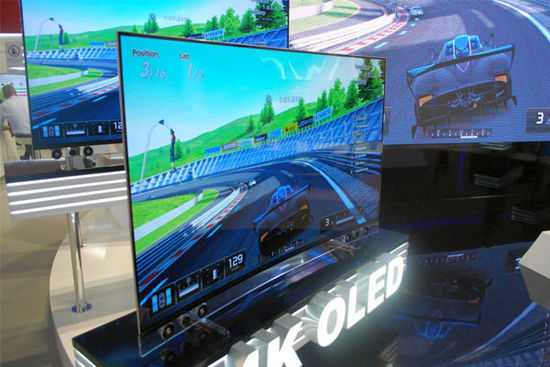 Lifeline is harder!
Lifeline is harder!
The risk of LCD screen fragmentation is still very high. Some inexperienced masters directly use the two ropes to pull the two ends of the TV package and carry the middle part on the back. This is very likely to cause the LCD TV to be subjected to excessive tension and the glass of the screen is broken. Whether it is the so-called "hard screen" or "soft screen", there is a layer of liquid crystal molecules in the middle, sandwiched between two glass, and it is easy to scratch or even break the screen with a little external force. Bear children at home must be more careful.
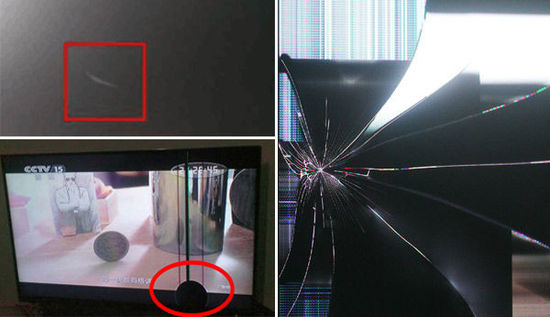 The OLED structure is more solid, and the organic material from the glass substrate to the OLED is solid, and the materials are more compact and firm. Send Skyworth 55S9300 like the PConline evaluation room some time ago. When the screen is pressed, the LCD TV does not appear to be as soft and stiff, and it is not easy for any object to collide or touch.
The OLED structure is more solid, and the organic material from the glass substrate to the OLED is solid, and the materials are more compact and firm. Send Skyworth 55S9300 like the PConline evaluation room some time ago. When the screen is pressed, the LCD TV does not appear to be as soft and stiff, and it is not easy for any object to collide or touch.
Revolutionary organic screen
OLED organic screen is not a new display technology, mobile phones have long used OLED organic screen. In fact, the principle is very simple is to use organic matter as a separate light-emitting body like the sun as a pixel, replacing the LCD TV's LCD screen and backlight LED lights; LCD TV backlight no longer needed. The realization of ULED and QLED, which we often hear, is essentially a LCD TV. The full name is LCD TV with LED backlight.
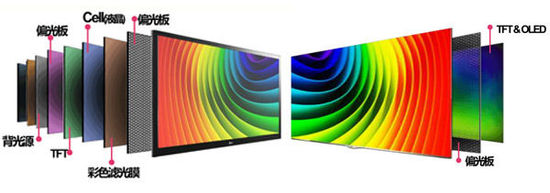 The LCD screen itself does not emit light. The LED behind the backrest emits white light. The LCD is like a blind. It controls the light transmitted by each pixel through a switch, and then filters through the topmost layer called a color filter. Red, green, and blue colors, and the final composition of the required colors, constitute the picture.
The LCD screen itself does not emit light. The LED behind the backrest emits white light. The LCD is like a blind. It controls the light transmitted by each pixel through a switch, and then filters through the topmost layer called a color filter. Red, green, and blue colors, and the final composition of the required colors, constitute the picture.
More pure black
The black field of OLED organic television has the purest black, because each light-emitting unit is organic and emits light spontaneously, like the small light bulb used at home. When there is no electricity, there is no light. The liquid crystal screen itself does not emit light, and the liquid crystal just controls the passage of light, like shutters. Even if it is closed, there is no way to completely block it. There will always be light that will leak over, so it will look gray.
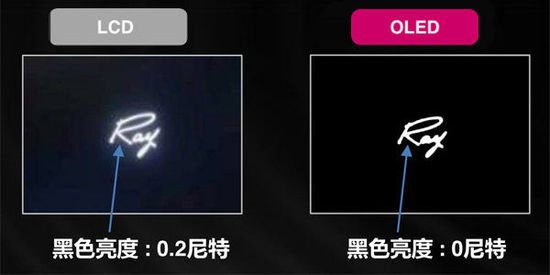 Unlimited contrast
Unlimited contrast
The contrast is the ratio of white field brightness/black field brightness. In simple terms, the contrast is the depth of the picture and the depth of field, as well as the color of the details. Ordinary LCD TVs will achieve a maximum contrast ratio of 10,000:1, but the contrast of OLED organic TVs is infinite, because it shows black is pure black, so the sense of depth, depth of field, and details are all excellent.
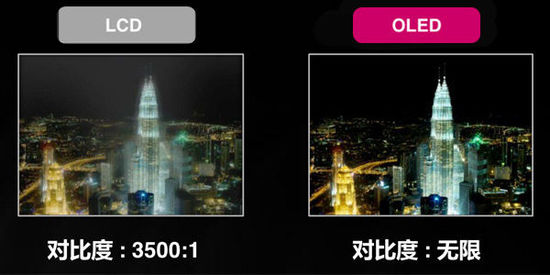 The most direct brightness
The most direct brightness
The backlight of the LCD TV is caused by the LED light bead behind the screen. It is necessary to pass some diaphragms to make the light uniform. Finally, through the LCD screen, there will be a layer after each layer. The LCD TV is at least There are 5 floors and the loss of light is serious. The revolutionary OLED organic television's luminous principle is self-luminous. After power on, every pixel on the screen will shine like the sun, and its brightness will not be lost. Therefore, the brightness performance can be more excellent.
 More true and true color
More true and true color
Even though the LCD TV adopts the wide color gamut technology, it can filter out the three primary colors after passing through the color filter. It is not a combination of pure red, green and blue colors. Each color is mixed with other colors. In fact, the color performance is still comprehensive. Very bad. The OLED organic TVs like the Skyworth S9300 series are self-illuminating pixels. Each sub-pixel emits light autonomously, and the three primary colors are particularly pure. This can be found when we compare and evaluate the same source in our evaluation room. The OLED display is the most Close to nature's true colors.
 Ultra-wide viewing angle
Ultra-wide viewing angle
LCD televisions have a more fatal drawback, that is, the perspective is not good, simply that the direction from which to look in the past is not the same picture, although some TVs use IPS's wide viewing angle technology, but from a slightly side perspective, The color will start to deviate, the brightness will also decrease, the greater the side view angle, the more serious the color difference. OLED organic TV is not the same, like a little sun, from which perspective is the same in the past.
 Extremely dynamic response
Extremely dynamic response
It is impossible for television to look only at static images, and more to watch motion pictures. The liquid crystal molecules of LCD TVs are just like blinds. It takes time to switch back and forth. When not completely closed, there will be light leakage. Naturally, there will be tailing. This will never be overcome. So the smearing of LCD TVs can never be solved.
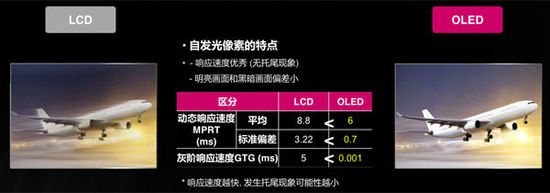
The OLED TV will not be trailing because it lights up and shuts off instantly, just like you switch lights at home. It only takes 0.001ms to watch the game and see large motion pictures. It will be smoother.
Summary: The revolutionary visual experience brought by OLED organic TV will make you feel that before you watch the LCD TV, you are in front of you like a layer of gauze. It is not pure enough and not thorough enough. The arrival of OLED organic television gave everyone a pair of bright and clear eyes. We have reason to believe that manufacturers like Skyworth and LG who are fighting in the front line of OLED display technology will continue to bring surprises and visual shock to consumers.

The risk of LCD screen fragmentation is still very high. Some inexperienced masters directly use the two ropes to pull the two ends of the TV package and carry the middle part on the back. This is very likely to cause the LCD TV to be subjected to excessive tension and the glass of the screen is broken. Whether it is the so-called "hard screen" or "soft screen", there is a layer of liquid crystal molecules in the middle, sandwiched between two glass, and it is easy to scratch or even break the screen with a little external force. Bear children at home must be more careful.

Revolutionary organic screen
OLED organic screen is not a new display technology, mobile phones have long used OLED organic screen. In fact, the principle is very simple is to use organic matter as a separate light-emitting body like the sun as a pixel, replacing the LCD TV's LCD screen and backlight LED lights; LCD TV backlight no longer needed. The realization of ULED and QLED, which we often hear, is essentially a LCD TV. The full name is LCD TV with LED backlight.

More pure black
The black field of OLED organic television has the purest black, because each light-emitting unit is organic and emits light spontaneously, like the small light bulb used at home. When there is no electricity, there is no light. The liquid crystal screen itself does not emit light, and the liquid crystal just controls the passage of light, like shutters. Even if it is closed, there is no way to completely block it. There will always be light that will leak over, so it will look gray.

The contrast is the ratio of white field brightness/black field brightness. In simple terms, the contrast is the depth of the picture and the depth of field, as well as the color of the details. Ordinary LCD TVs will achieve a maximum contrast ratio of 10,000:1, but the contrast of OLED organic TVs is infinite, because it shows black is pure black, so the sense of depth, depth of field, and details are all excellent.

The backlight of the LCD TV is caused by the LED light bead behind the screen. It is necessary to pass some diaphragms to make the light uniform. Finally, through the LCD screen, there will be a layer after each layer. The LCD TV is at least There are 5 floors and the loss of light is serious. The revolutionary OLED organic television's luminous principle is self-luminous. After power on, every pixel on the screen will shine like the sun, and its brightness will not be lost. Therefore, the brightness performance can be more excellent.

Even though the LCD TV adopts the wide color gamut technology, it can filter out the three primary colors after passing through the color filter. It is not a combination of pure red, green and blue colors. Each color is mixed with other colors. In fact, the color performance is still comprehensive. Very bad. The OLED organic TVs like the Skyworth S9300 series are self-illuminating pixels. Each sub-pixel emits light autonomously, and the three primary colors are particularly pure. This can be found when we compare and evaluate the same source in our evaluation room. The OLED display is the most Close to nature's true colors.

LCD televisions have a more fatal drawback, that is, the perspective is not good, simply that the direction from which to look in the past is not the same picture, although some TVs use IPS's wide viewing angle technology, but from a slightly side perspective, The color will start to deviate, the brightness will also decrease, the greater the side view angle, the more serious the color difference. OLED organic TV is not the same, like a little sun, from which perspective is the same in the past.

It is impossible for television to look only at static images, and more to watch motion pictures. The liquid crystal molecules of LCD TVs are just like blinds. It takes time to switch back and forth. When not completely closed, there will be light leakage. Naturally, there will be tailing. This will never be overcome. So the smearing of LCD TVs can never be solved.

The OLED TV will not be trailing because it lights up and shuts off instantly, just like you switch lights at home. It only takes 0.001ms to watch the game and see large motion pictures. It will be smoother.
Summary: The revolutionary visual experience brought by OLED organic TV will make you feel that before you watch the LCD TV, you are in front of you like a layer of gauze. It is not pure enough and not thorough enough. The arrival of OLED organic television gave everyone a pair of bright and clear eyes. We have reason to believe that manufacturers like Skyworth and LG who are fighting in the front line of OLED display technology will continue to bring surprises and visual shock to consumers.